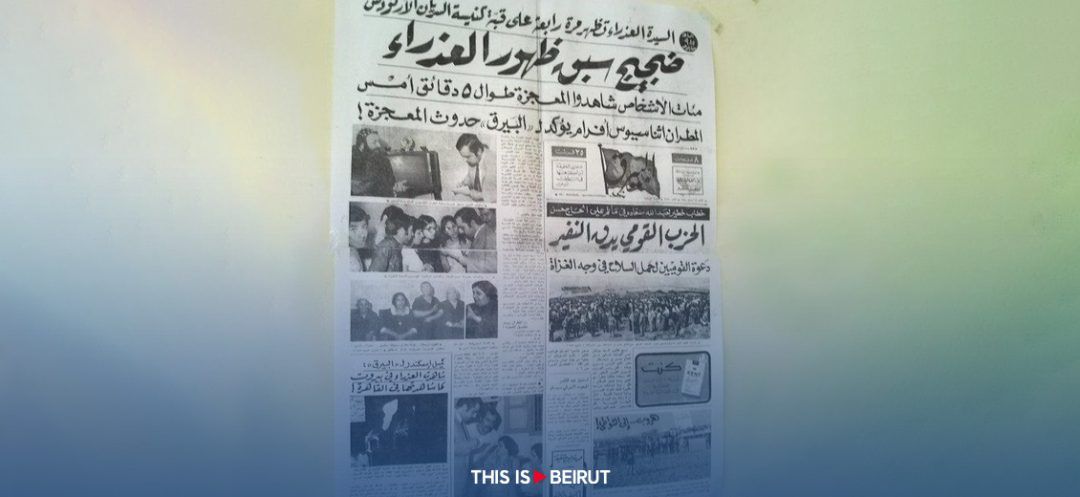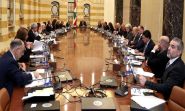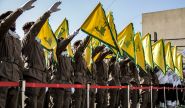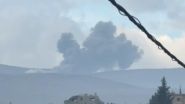
April 8, 1970. Young Thérèse Abdallah is doing her homework in the study hall of the Syriac Orthodox school in Mseitbeh, a predominantly Sunni neighborhood in Beirut. She is the eldest in her family, and her father is the steward of the local bishop, Athanassios Ephrem Barsoum.
In Mseitbeh, Muslims and Christians live side by side, but it is mostly the neighborhood where Syrian families who fled the genocide perpetrated against Armenians and other Christian minorities of the Ottoman Empire (1915) have regrouped. The school is built within the grounds of the Syriac Orthodox Archdiocese of Beirut, where the basilica of Saint Peter and Paul also stands, a pretty building topped with a dome.
In the evening, around 8:30 p.m., as she leaves the study hall, crossing the schoolyard, Thérèse Abdallah, at the signal of a classmate, looks up and sees above the dome of the church, surrounded by light, the Virgin Mary, whose blue robe she clearly distinguishes. She is of an indescribable, unforgettable beauty and majesty. Rebuked by the supervisor, who fears a beginning of confusion in the ranks, escorted to the exit door, from where the dome is no longer visible, she goes home, frustrated. At around 10 p.m., hearing the sound of the bells of the basilica, whistles, and gunfire, Thérèse can't stay still and runs out towards the basilica. The whole neighborhood is in turmoil. Worshipers and onlookers are already gathered in the schoolyard, ecstatic at the sight of the luminous silhouette of the Virgin.
The prolonged and silent nocturnal apparitions of Our Lady above the basilica's dome continued throughout the Easter season, celebrated that year on April 26. Thousands of witnesses from all social classes, both Christian and Muslim, were amazed by them.
Apparitions also occur inside the basilica, and a register is offered to the faithful. Those who saw her testify to having seen her, sometimes with hands holding a rosary, joined in prayer, sometimes kneeling before the cross, sometimes with hands raised or arms crossed on her chest. She also appears with the Infant Jesus and Saint Joseph, or as depicted by the statue of Our Lady of Lebanon.
The press and even the young Lebanese Television Company will seize this event, and crowds will flock from Lebanon and Syria to witness it. By an apostolic letter, Patriarch Severius Yaacoub III (1902-1980) of the Syrian Orthodox confirmed the authenticity of the heavenly visit and the awakening of piety that accompanied it.
During a mass celebrated by Bishop Athanassios Ephrem Barsoum, at the words of consecration, the Virgin was seen weeping by some worshippers, under the aspect of Our Lady of Sorrows. It was in 1970. Five years later, war broke out in Lebanon. It is therefore legitimate to wonder: What was the Virgin trying to say at the time? Did she come to ask Christians to convert, to pray, and to remain united in the face of mounting dangers? Did she come to warn the Lebanese against the threats of violence and divisions? It is up to each to decide. No doubt all of this at once.
Alas, her presence, the signs that accompanied her, and the warnings of a small community that had fervently prayed for her appearance, were superbly ignored by a country already deeply divided. However, these apparitions were not inferior in importance to those that had shaken, two years earlier, the Zeitoun neighborhood in Cairo. In Egypt too, the repeated apparitions had been nocturnal, luminous, and silent, and thousands of people, including President Gamal Abdel Nasser, had witnessed them. Numerous works are dedicated to them.
In our case, religious hierarchies, except for that of the Syriac Orthodox Church, remained unmoved, preventing the heavenly visit from taking on a national dimension.
In Mseitbeh, to this day, the apparitions of 1970 are commemorated, traditionally, on the first Sunday after Easter. Until a few years ago, a procession and a fair were organized, and a large "hrisseh” was cooked for the occasion. But difficult times are extinguishing everything, even these small festivities.
More than fifty years have passed since these apparitions. From the history of the 20th century, especially from the Second World War, and from that of Lebanon in the last 50 years, we have learned that the warnings of the Virgin, whether at Fatima, Beirut, or elsewhere, are always significant. A glance around confirms this: a political and social apocalypse is at our doorstep. The whole world is dizzy.
But if the dangers facing faith are far from being averted, the mercies of God, too, "are not finished," as the Psalms assure us. God still speaks to men, let us not doubt it.
Against the positivist vision of a history that would progress from synthesis to greater synthesis, the Christian philosopher Jacques Maritain asserts: "One of the fundamental axioms of a healthy philosophy of history (...) is that the history of the world progresses at the same time in the line of evil and in the line of good."
In the Christian faith, "the future is not fixed in an immutable way," says Benedict XVI, but remains open to our freedom, to our intercession, as well as to the designs of peace of which the Virgin Mary is the first advocate. Like Penelope making and unmaking the knots of her tapestry, awaiting the return of Ulysses, let us allow ourselves to be warned by the motifs drawn by the Mother of the Church on the canvas of history, awaiting the promised advent "of a new earth and new heavens". Or a new visit.
Read more



Comments